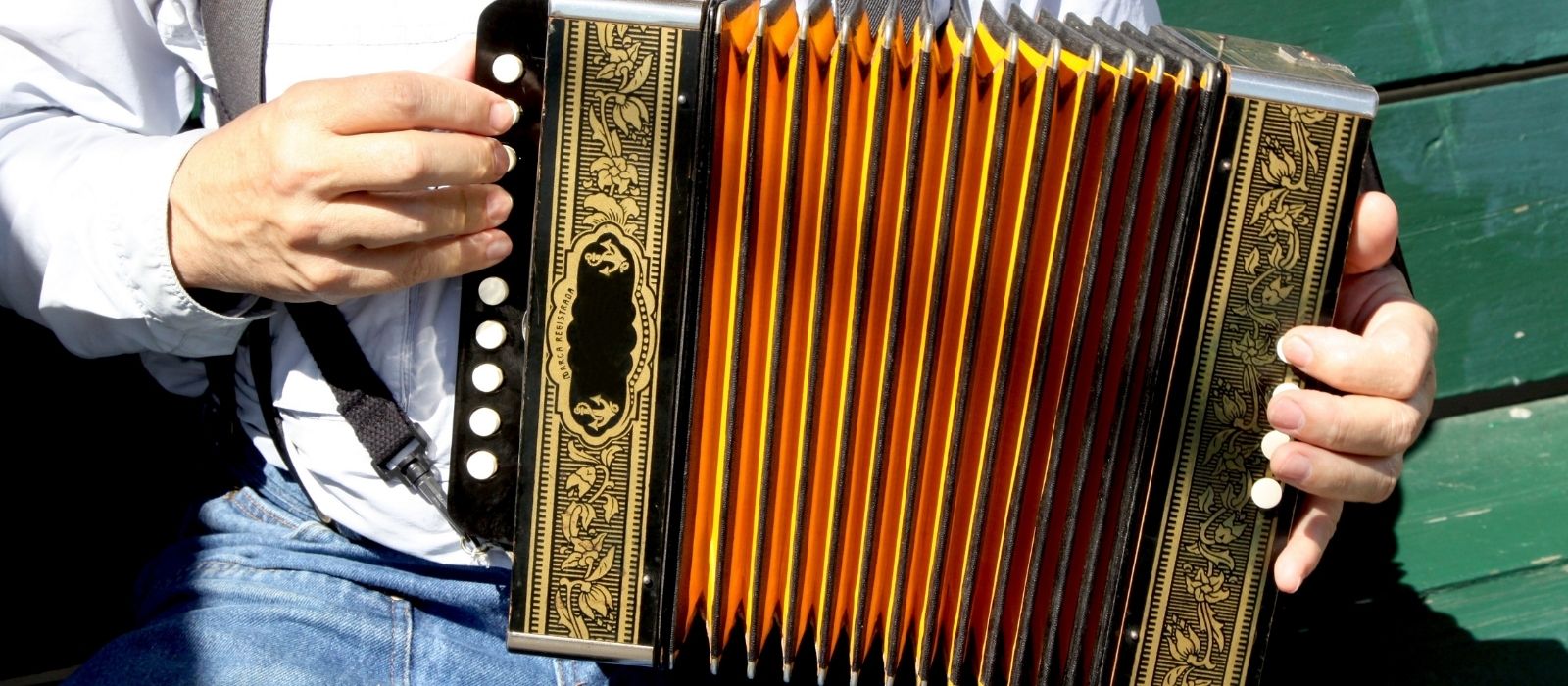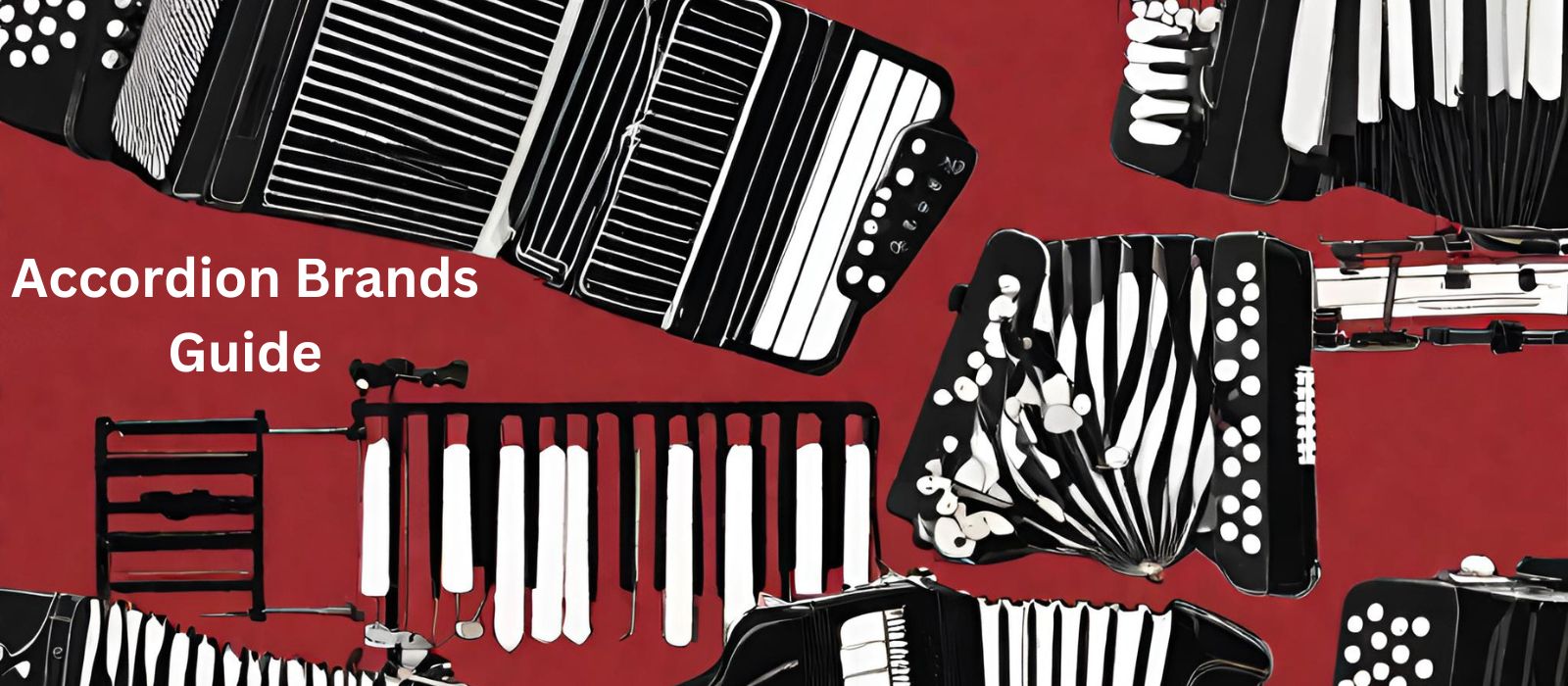What is the accordion?
The accordion is a wind instrument consisting of two reed organs connected by folding bellows. Expanding and contracting the bellows provides air current which vibrates the reed organs and produces the sounds. The keyboard is on the right side designed to play melodic notes and buttons on the left “box” are designed to produce bass notes or tones. The basic accordion note range spans from F below the treble clef to the fifth space A above the treble clef.
Who Invented the musical instrument known as the Accordion?
Accordion predecessor, The Sheng.
Chinese folk instrument Sheng is by many considered to be the ancestor of the free reed instruments. The sheng was brought to the European continent by Jean Joseph Marie Amiot, a French Jesuit missionary in China.

We probably would not have musical instruments like the accordion, the harmonica, or the organ had it not been for the Chinese inventors of the free reeds.
Original Sheng instruments are made from bamboo sticks. Some of the first shengs had 13 or 14 reeds and later versions consisted of 17,21,24,26 or even 27 reeds.
Shengs are polyphonic instruments which means that they can play multiple notes simultaneously.
The modern sheng went through various technical adaptations and improvements since the 1950s when a 26-reed Sheng was introduced by Zhao Zhende. Contemporary sheng instruments are used in orchestras, bands, and solos.
“The chest represents the earth, reeds are seeds, and the bamboo pipes are the crops that grow on the earth. A harmonious bond between the earth and humanity is embodied in the sheng.” These are the words of the Sheng teacher, Ling Bo at the college of art in Beijing, China. We couldn’t agree more with his statement.
European Inventors
While the contemporary form of the accordion is believed to be first created by Christian Friedrich Ludwig Buschmann in Berlin in 1822, many music historians believe the earliest simple accordion was first made by Timofey Vorontsov in Tule in 1820 and Ivan Sizov in 1830. And some researchers even claim that the Chinese instrument Sheng should be considered a predecessor to today’s modern accordion.
In 1829 Damian Cyrillus of Vienna created a new version of the instrument and named it the accordion because of the buttons played by the left hand. After this addition, all musical instruments of this type were called Accordions. Accord is the French term for chords.
Quickly, the accordion became an international instrument, and each country that adopted it developed its musical genre. Some famous examples of these genres are Polka, Tango, Zydeco, Sevdah, and many others.
The accordion was well received around the globe and successfully proliferated into folk music genres of many ethnic groups and cultures. Being a standalone, free-reed instrument that is powered by a hand movement, this fun sound-generating box was an attraction from the start.
Evolution of the modern accordion
Armenian inventor Cyrilus Demian patented the accordion in 1989 in Austria. He was a bit proponent of playing the whole chords on one side of the instrument as opposed to a concertina that has buttons on both sides. Since his concept revolved around chords, he named the instrument “Akkordeon” from Akkord (German for chord).
French accordéon makers Jean Baptiste Napoleon and Constant Busson dominated the European accordion market from 1830 to 1870. Sadly, mass production of accordions ceased due to the Franco-Prussian war. Accordions from this era are known for their exquisite decor and embellishments.
Busson’s accordions were popular globally. Music historians documented the appearance of French-made accordions on Japanese art prints and postcards.
Right before the French accordion production declined, Italian craftsmen began making their first squeeze boxes in Castelfidardo. A city that will become a synonym for some of the best and finest accordions in the world.
Classification of Accordions
Button Accordions
Button Accordions, as the name, suggests contain buttons instead of keys like piano-like keys. Buttons are situated on both sides of the accordion. Left and right. Button accordion, also known as, “Chromatic accordion” is an accordion where the melodic side of the keyboard consists of rows of buttons arranged chromatically.
The Chromatic Button Accordion Explained
Piano Accordions
Piano accordions contain keys on the right side and buttons on the left side.
Piano keys were first used on an accordion in Paris in 1852 by Bouton. Fairly quickly after that, Piano accordions spread across the globe almost virally. They became a standardized musical instrument after the implementation of the Stradella Bass System. (Layout of the Bass buttons).
Piano accordions are further classified based on the number of bass notes (bass buttons)
48 bass notes
72 bass notes
120 bass notes
Different Types of Piano Accordions
Dino is a hobbyist accordionist who loves music, photography, architecture, design and a slew of other fun things. He decided to launch this blog due to an increasing popularity of the accordion. He learned how to play the accordion by ear as a child and then progressed on to keyboards and eventually a drum set. He grew up in the Balkans and now lives in California where he occasionally plays the accordion at birthday parties and NYE celebrations. He now shares his love for the accordion through this blog.






Leave a Reply